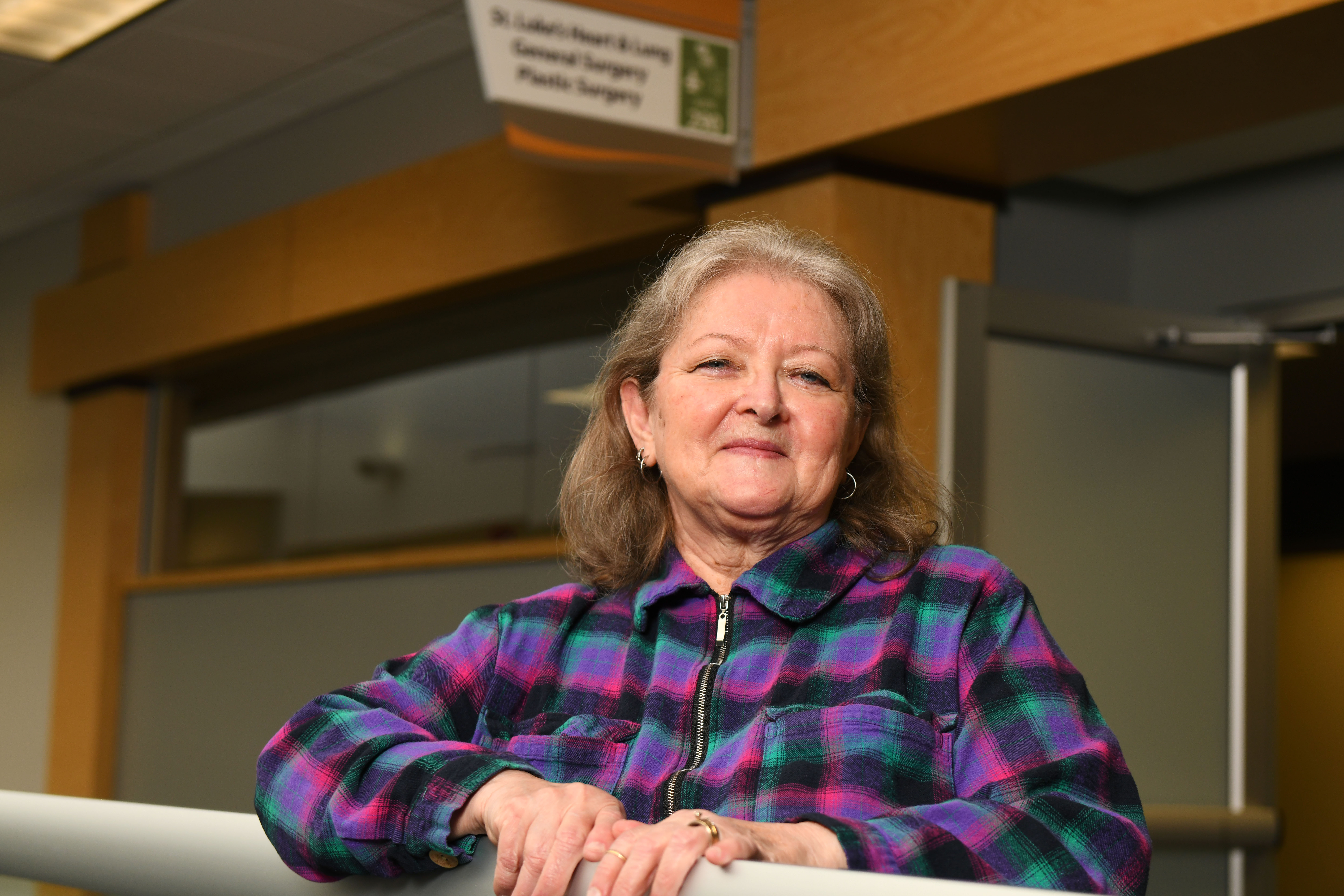
5 minute read
MINIMALLY INVASIVE ROBOT-ASSISTED LUNG SURGERY AVAILABLE ONLY AT ST. LUKE'S
Kay Ledesma is now cancer-free thanks to a new minimally invasive surgical procedure now available in Cedar Rapids only at St. Luke’s. Ledesma was one of the first patients to benefit from da Vinci robotic lung surgery at St. Luke’s. The Oelwein woman had a robot-assisted lobectomy last year to remove lung cancer found during a chest X-ray during a bout with bronchitis several years ago.
“They discovered I had a nodule in the lower lobe of my left lung,” shared Ledesma. “I started seeing Dr. Gogineni, a pulmonologist, and he's been doing CT scans on my chest every six months. He was watching the nodule for changes. The last couple of years, there's been no change, but in 2023 it increased in size.”
It was during the next scan that Vijaya Gogineni, MD, from UnityPoint Clinic –Multi-Specialty and Nassif Community Cancer Center, noted the nodule changed again – this time in its density. Ledesma had additional testing and a biopsy, which returned a diagnosis of lung cancer. She was a long-time smoker but had kicked the habit 12 years ago. She was told the nodule was likely from smoking. Thankfully her cancer was caught early.
“Dr. Gogineni talked with me about my treatment options, and I chose to have the lower lobe of my lung removed to get rid of the cancer all together,” Ledesma explained. “I wanted to eliminate the chance of it spreading. He told me about Dr. Weide and minimally invasive robotic lung surgery.”
The Increase of Robot-Assisted Procedures in Thoracic Surgery
Cardiothoracic Surgeon Garry Weide, DO, St. Luke’s Heart and Lung Surgery, began using the da Vinci surgical robot for some thoracic surgeries last year.

“Surgeons at St. Luke’s have been operating with the da Vinci surgical robot since 2005, predominately in urology, gynecology and some general surgery,” explained Dr. Weide. “The most recent iteration of the technology is the da Vinci Xi, which St. Luke’s invested in. The instrumentation, 3-D visualization, and the articulating robotic arms, which mimic hand movements, made the new robot more favorable for thoracic surgery.”
During robot-assisted surgery the surgeon is fully in control – operating the surgical instruments while seated at a console in the operating room.
“Initially when I decided to have surgery, I was in a total panic because I didn’t want to have open surgery with a large incision and a long recovery,” Ledesma said. “When Dr. Weide said I could have robot-assisted surgery and explained it would be less invasive, with smaller incisions and a faster recovery – it made me extremely happy.”
Minimally Invasive Surgery Reduces Hospital Stay, Speeds Recovery
“Kay was in the hospital for only two days. Prior patients who had open thoracic surgery approaches were in the hospital five to seven days,” Dr. Weide explained. “Her hospital stay and recovery were cut down significantly. The incisions are much smaller, the pain is reduced, and patients can return to their normal activities sooner.”
“My care at St. Luke’s was great and my nurses were awesome,” said Ledesma. “I had my surgery on a Friday and was able to go home Sunday. Dr. Weide removed the lower lobe of my lung and eight lymph nodes. All the lymph nodes came back cancer-free. The only cancer detected was in the lower lobe. He was certain they removed all the cancer.”
“The tumor came out with negative margins and because of that she doesn't need additional treatment,” shared Dr. Weide. “I am glad we are able to offer this minimally invasive surgery at St. Luke’s. Currently there aren’t a lot of places in the state doing robot-assisted thoracic surgery. It’s a nice option for our patients who need it, and it’s close to home.”
Thanks to this new minimally invasive surgery offered at St. Luke’s, Ledesma is happy to be back spending more time with her family, playing with her grandchildren, and living life without cancer.
To find a list of surgeons who perform robot-assisted surgery at St. Luke’s, visit unitypoint.org/providers.
St. Luke’s Lung Check
The best chance of a cure for lung cancer is early detection. That's why St. Luke's and the Nassif Community Cancer Center developed the Lung Check program. Lung cancer remains the leading cause of cancer death in both men and women and is typically diagnosed at a more advanced stage after the cancer has spread. This test offers patients an earlier diagnosis, so they can recover faster.
St. Luke's Lung Check includes a chest CT scan, which is a non-invasive test using low-dose X-rays that provide detailed, three-dimensional images of the lungs. Radiologists review the images for the presence of small spots on the lungs, called nodules.
Take Our Quiz to See if You’re a Candidate for a Lung Screening
Are you between the ages of 50-77?
Do you have at least a 20-pack-per-year history of smoking?
If you no longer smoke, did you quit within the last 15 years?
Have you ever been diagnosed with any type of cancer?
Have you been exposed to a significant amount of secondhand smoke?
Have you had prolonged exposure to asbestos or radon?
Do you have a family history of lung cancer?
Have you ever been diagnosed with a lung disease?
Have you had long-term exposure to chemical fumes, vapors or dust?
If you answered yes to three or more of these questions, you may be a candidate for a lung screening. Call (319) 558-4876 to learn more about St. Luke’s Lung Check.






